order
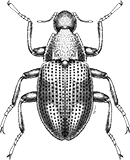
Coleoptera
“Adult Beetles”

Coleoptera
“Larval Beetles”

Diptera
“True Flies”

Ephemeroptera
“Mayflies”
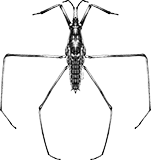
Hemiptera
“True Bugs”

Lepidoptera
“Aquatic Caterpillars, Snout Moths”

Megaloptera
“Alderflies, Dobsonflies, and Fishflies”
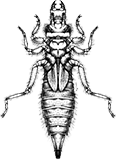
Odonata
“Dragonflies and Damselflies”
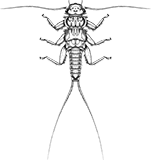
Plecoptera
“Stoneflies”
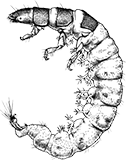
Trichoptera
“Caddisflies”
family
Psephenidae
genus
Psephenus
“Water Pennies”
Genus Overview
The larvae of this genus are aquatic. They are almost always found stuck (suction-cup-like) to the sides and tops of rocks, where they feed by scraping periphyton and other food off the substrate. They are very distinctive, flat, shield-shaped larvae, almost trilobite-like in appearance, with the legs only visible from the ventral side Psephenus and Ectopria are the two most common genera in Psephenidae, and can be easily confused, however, they can be readily separated by the presence of abdominal gills ventrally on Psephenus.
Characteristics
POLLUTION TOLERANCE
Southeast: 2.5 and higher
Upper Midwest: 4 and higher
Midwest: 3.5 and higher
0 = least tolerant, 10 = most tolerant
FEEDING HABITS
Scraper / Grazer
MOVEMENT
Clinger
DISTRIBUTION
Widespread (east of the Rocky Mtns.)
HABITAT
Lotic-erosional
Diagnostic Characters
order
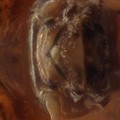
Eye Spots
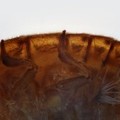
Lateral Gills USUALLY Absent
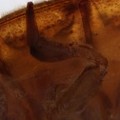
USUALLY 4-5-Segmented Legs
family
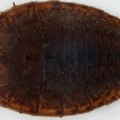
Flat Body

Shield-Like
+ Expanded Character List
Order:
Larvae: Usually without lateral abdominal gills. If gills present, then 4 hooks clustered on segment 10. Thoracic legs each usually with 4 or 5 segments and with 1 or 2 claws; if without legs, head distinctly sclerotized and posterior body (thorax and abdomen) simple, without gills, hair brushes, suckers, or breathing tube. Eye spots usually present, but compound eyes absent.
Family:
Short 2–3 segmented antenna. Labrum and clypeus separated by suture. Legs (visible ventrally) 3–4 segmented with only single tarsal claw, suitable for walking. Abdomen 9-segmented. Abdominal tergites without dorsal lobes. Body dorsoventrally flattened, with thoracic and abdominal tergites expanded laterally, collectively forming thin shield covering head and legs from above.
Genus:
Ventrally, abdomen with 5 paired tufts of thread-like gills. Lateral expansions of each abdominal segment fitting together tightly at margin, but segment 8 without lateral expansions. Abdominal segment 9 without small ventral flap-like lid (operculum) closing caudal chamber.
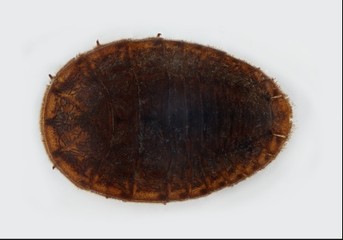
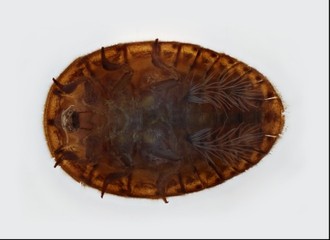
Dorsal
Ventral




